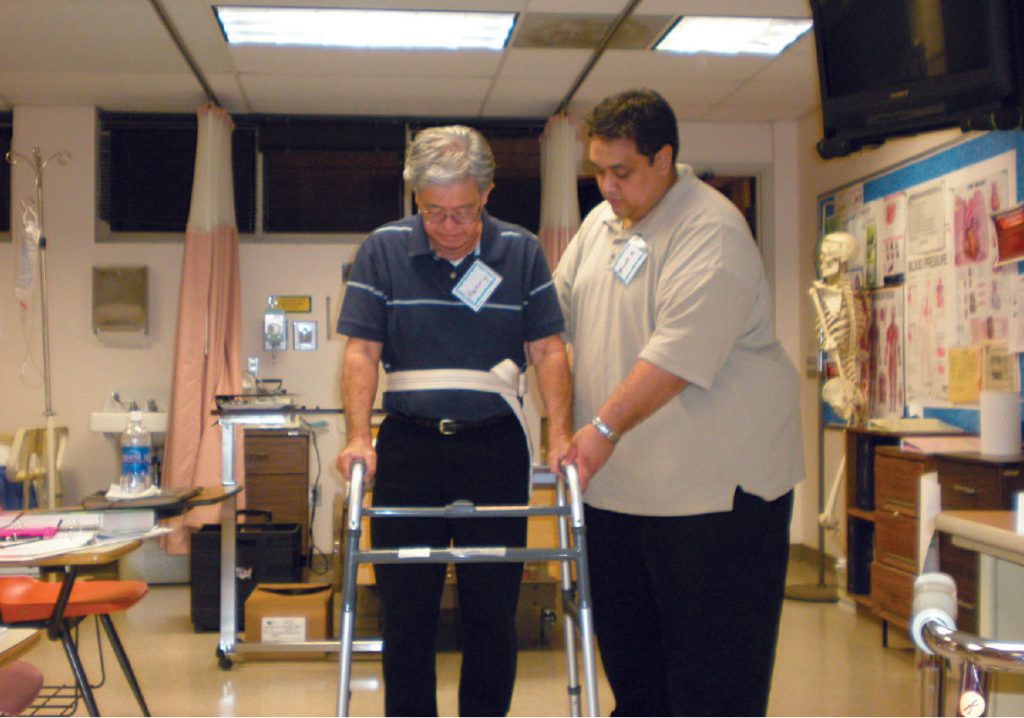 Moving and transferring the elderly is a challenge for many caregivers, especially those who lack formal training. But, the process can be made easier and safer by learning some simple tips.
Moving and transferring the elderly is a challenge for many caregivers, especially those who lack formal training. But, the process can be made easier and safer by learning some simple tips.
1. Educate yourself on how to move the elderly, especially those who are frail. Caregivers should receive training from a physical therapist before an elderly is discharged from a hospital or nursing home. Proper training can reduce injury and risk to both the elderly and the caregiver.
2. Use equipment. Purchase a gait belt at a local medical supply store to help grip onto an elderly person and decrease the chance of injury. Other useful items include shower rails, grab bars and hospital beds.
3. Wear proper clothing. The elderly and caregiver should wear covered shoes or non-slip socks. Slippers and high heels are discouraged.
4. Communication is the key. Make sure the elderly does as much as he or she can to get from one place to another. This requires talking them through the process and keeping sentences specific and brief, especially for those with Alzheimer’s or dementia.
5. Get rid of hazards. Pets, loose mats and color-coordinated items are dangerous to the elderly, who are prone to tripping over things, especially at night.
6. Provide adequate lighting. By age 65, people require 60 percent more lighting to distinguish differences in tone. Caregivers can also mark edges of the stairs and add more contrast to areas in the house to make it safer.
7. The elderly should not grab onto caregivers. Sometimes the elderly get scared and grab caregivers around the neck, which is dangerous. It’s best to offer a safer part of the body to hold onto, like the forearm.
8. Do what’s best for yourself AND the elderly. Families have to make critical decisions about knowing when it’s becoming too difficult to care for someone. Caregivers should keep themselves healthy, have respite time and take care of their backs.
9. It’s technique, not muscle. People tend to think that moving and transferring requires physical strength, but learning basic tricks is the key. A simple phrase to remember is, “nose over toes” to help caregivers remember that they need to get the elderly person’s body to go forward in order to get up.
10. Be cautious…when helping an elderly person who has fallen. Most caregivers think they need to pick up someone immediately after a fall. But, it’s important to watch for red flags like confusion, dizziness, pain and limbs turned in abnormal ways. If it seems safe to move the elderly, pick them up from underneath the arms or they can crawl to a chair or couch that they can use to pull themselves up. For larger people, ask for help or call 911. Meanwhile, provide the elderly with a pillow and blanket. Gently roll them on their side if they’re in a position that could cause choking.
DISCLAIMER
Information provided by Ann Low, academic coordinator for clinical education at Kapi‘olani Community College. She works with the PTA program in the Health Sciences Department and also teaches a section of the KCC’s Family Caregiver Training Series.
This series of caregiver tips is brought to you by the Kupuna Education Center at Kapi‘olani Community College. For more information, please call 734-9211.


Leave a Reply